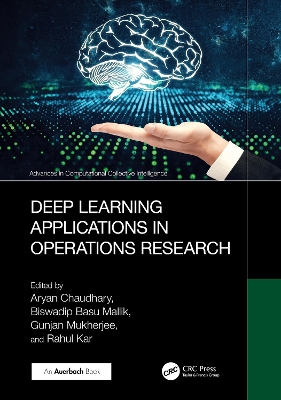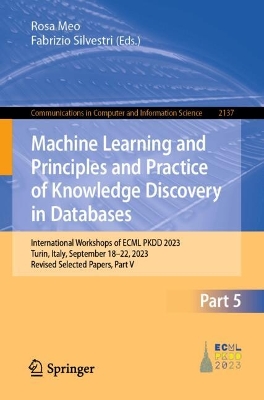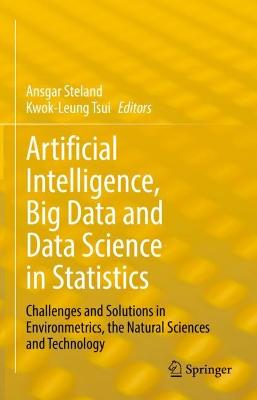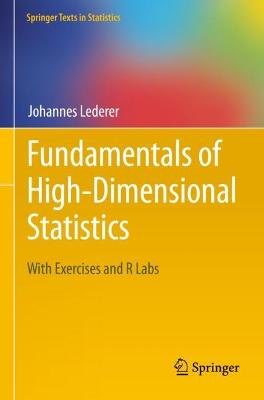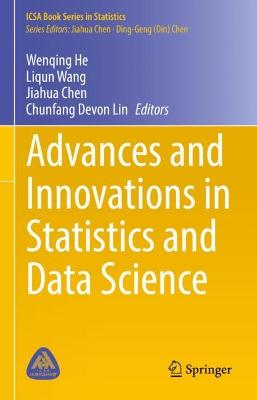Probability for Information Technology
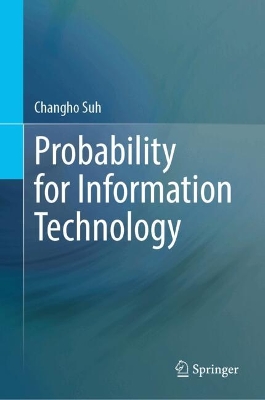 portes grátis
portes grátis
Probability for Information Technology
Suh, Changho
Springer Verlag, Singapore
11/2024
353
Dura
9789819740314
15 a 20 dias
Descrição não disponível.
Preface.- Acknowledgements.- Part I. Basic concepts of probability.- Chapter 1. Overview of the book.- Chapter 2. Sample space and events.- Chapter 3. Monty Hall problem and Python implementation.- Problem Set 1.- Chapter 4. Conditional probability and total probability law.- Chapter 5. Independence.- Chapter 6. Coupon collector problem and Python implementation.- Problem Set 2.- Chapter 7. Random variables.- Chapter 8. Expectation.- Chapter 9. BitTorrent and Python implementation.- Chapter 10.Variance and Chebyshev's inequality.- Problem Set 3.- Chapter 11.Continuous random variables.- Chapter 12. Gaussian random variables.- Problem Set 4.- Part II. Introductory random processes and key principles.- Chapter 13. Introduction to random processes.- Chapter 14. Maximum A Posteriori (MAP) principle.- Chapter 15. MAP: Multiple observations.- Chapter 16. MAP: Performance analysis.- Chapter 17. MAP: Cancer prediciton and Python implementation.- Problem Set 5.- Chapter 18. Maximum Likelihood Estimation (MLE).- Chapter 19. MLE: Law of large numbers.- Chapter 20. MLE: Gaussian distribution.- Chapter 21. MLE: Gaussian distribution estimation and Python implementation.- Chapter 22. Central limit theorem.- Problem Set 6.- Part III. Information Technology Applications.- Chapter 23. Communication: Probabilistic modeling.- Chapter 24. Communication: MAP principle.- Chapter 25. Communication: MAP under multiple observations.- Chapter 26. Communication: Repetition coding and Python implementation.- Problem Set 7.- Chapter 27. Social networks: Probabilistic modeling.- Chapter 28. Social networks: ML principle.- Chapter 29. Social networks: Community detecition and Python implementation.- Problem Set 8.- Chapter 30. Speech recognition: Probabilistic modeling.- Chapter 31. Speech recognition: MAP principle.- Chapter 32. Speech recognition: Viterbi algorithm.- Chapter 33. Speech recognition: Python implementation.- Problem Set 9.- Appendix A: Python basics.- Bibliography.- Index.
Este título pertence ao(s) assunto(s) indicados(s). Para ver outros títulos clique no assunto desejado.
Random Processes;Digital Communication;Data Science;Machine Learning;Community Detection;Speech Recognition;Python
Preface.- Acknowledgements.- Part I. Basic concepts of probability.- Chapter 1. Overview of the book.- Chapter 2. Sample space and events.- Chapter 3. Monty Hall problem and Python implementation.- Problem Set 1.- Chapter 4. Conditional probability and total probability law.- Chapter 5. Independence.- Chapter 6. Coupon collector problem and Python implementation.- Problem Set 2.- Chapter 7. Random variables.- Chapter 8. Expectation.- Chapter 9. BitTorrent and Python implementation.- Chapter 10.Variance and Chebyshev's inequality.- Problem Set 3.- Chapter 11.Continuous random variables.- Chapter 12. Gaussian random variables.- Problem Set 4.- Part II. Introductory random processes and key principles.- Chapter 13. Introduction to random processes.- Chapter 14. Maximum A Posteriori (MAP) principle.- Chapter 15. MAP: Multiple observations.- Chapter 16. MAP: Performance analysis.- Chapter 17. MAP: Cancer prediciton and Python implementation.- Problem Set 5.- Chapter 18. Maximum Likelihood Estimation (MLE).- Chapter 19. MLE: Law of large numbers.- Chapter 20. MLE: Gaussian distribution.- Chapter 21. MLE: Gaussian distribution estimation and Python implementation.- Chapter 22. Central limit theorem.- Problem Set 6.- Part III. Information Technology Applications.- Chapter 23. Communication: Probabilistic modeling.- Chapter 24. Communication: MAP principle.- Chapter 25. Communication: MAP under multiple observations.- Chapter 26. Communication: Repetition coding and Python implementation.- Problem Set 7.- Chapter 27. Social networks: Probabilistic modeling.- Chapter 28. Social networks: ML principle.- Chapter 29. Social networks: Community detecition and Python implementation.- Problem Set 8.- Chapter 30. Speech recognition: Probabilistic modeling.- Chapter 31. Speech recognition: MAP principle.- Chapter 32. Speech recognition: Viterbi algorithm.- Chapter 33. Speech recognition: Python implementation.- Problem Set 9.- Appendix A: Python basics.- Bibliography.- Index.
Este título pertence ao(s) assunto(s) indicados(s). Para ver outros títulos clique no assunto desejado.

